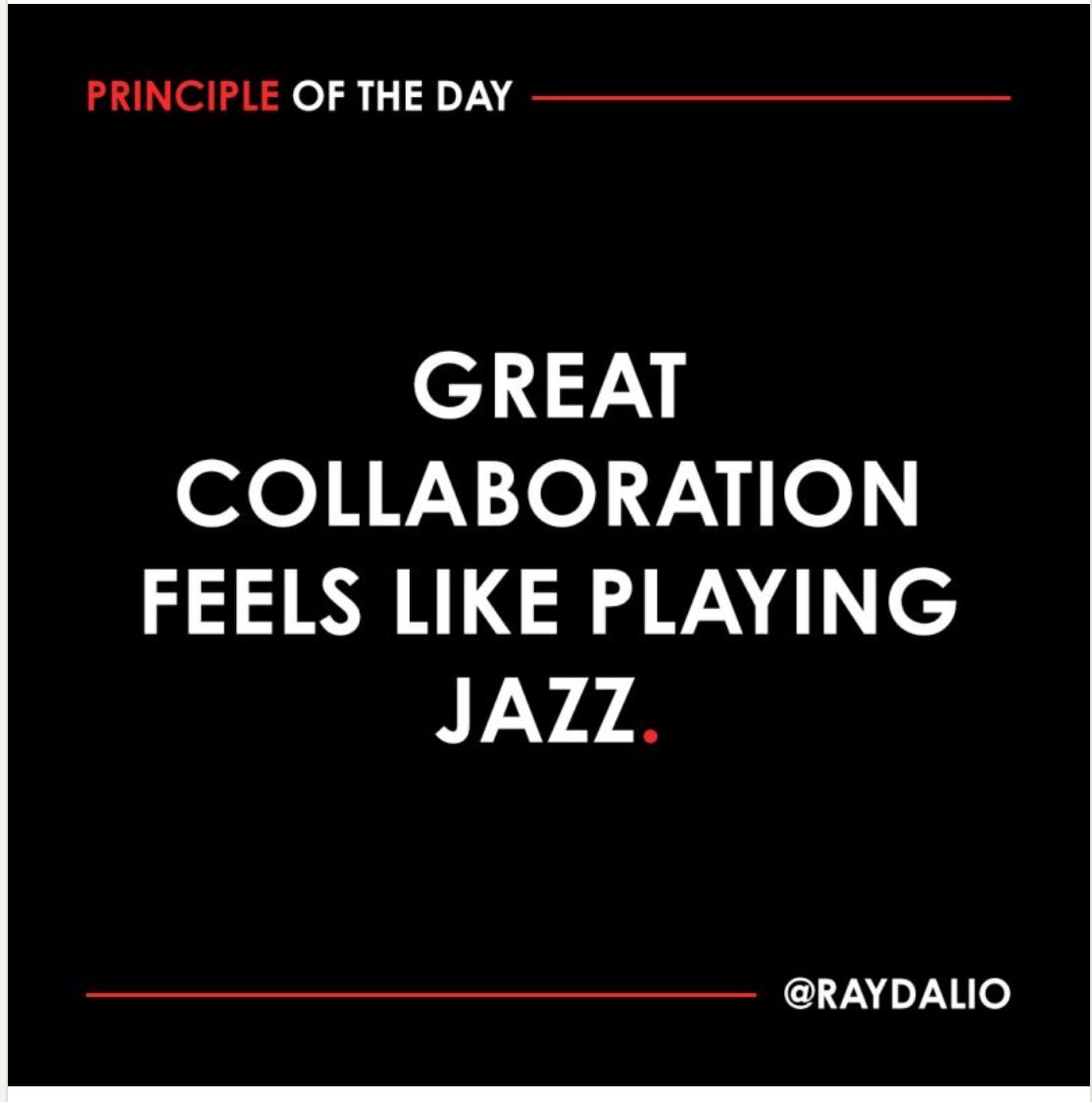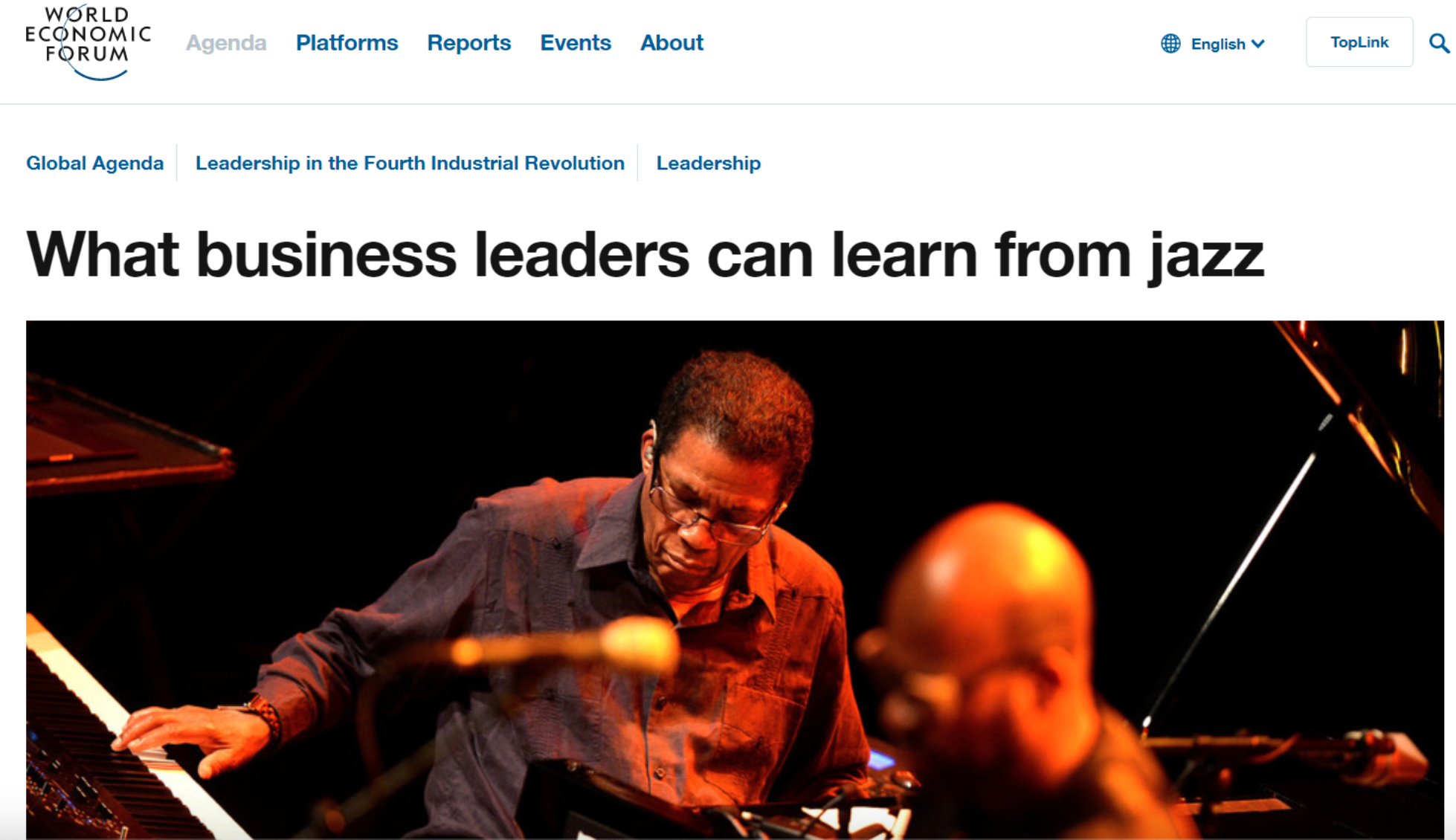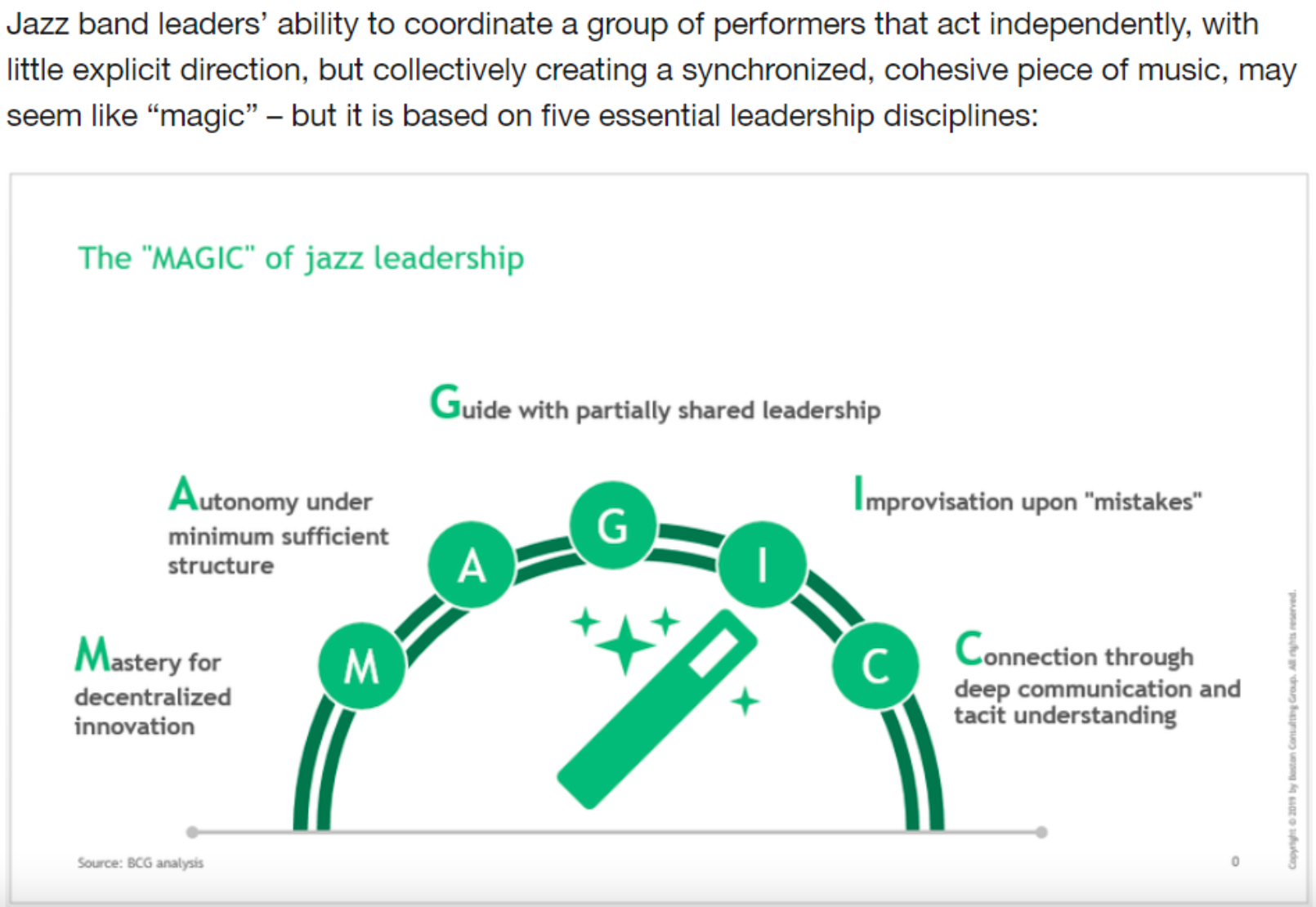Jazz and Business: A Key Connection
An essential foundation of this blog on leadership is the relationship between the principles and practices of jazz music and how teams collaborate and leaders lead in business. With a client list that includes Verizon, JPMorgan Chase, the Center for Policing Equity, TD Bank, and, recently, Google, the Jazz Leadership Project—which powers this publication—is perfectly positioned as a thought leader on this relationship.
The following piece, originally published in 2020, makes a case in front of an imaginary jury tasked with answering the question: Is there really a relationship between jazz and business?
If the business of America is business, and jazz is America’s most sophisticated musical form, then in today’s complex world tying the two together makes sense.
Yet we are far from the first to make this explicit connection. Below we share examples, starting 30 years ago, in which business leaders of note, beginning with John Clarkeson of the Boston Consulting Group and ending with founder of Bridgewater Associates Ray Dalio, lean on jazz as a necessary and essential metaphor for business in the 21st century and beyond.
The winning organization of the future will look more like a collection of jazz ensembles. Leaders will be in the flow, not remote; they will not be able to rely on exclusive decision-making authority; they will use the conflict among diverse points of view to reach new insights. The distinctions between composer/conductor/performer are eroding.
—John Clarkeson, 1990, as then-CEO of the Boston Consulting Group
Adrian Cho is a bassist, business consultant and founder of an acclaimed symphonic jazz orchestra in Ottawa, Canada. DePree’s Leadership Jazz references jazz early on but then moves on to general leadership qualities full of wisdom. Cho, on the other hand, dives into jazz with great depth, relating the principles and practices of the music to leadership and high-performance team development, while integrating other fields and disciplines. Published in 2010, The Jazz Process: Collaboration, Innovation, and Agility is a tour de force work of analysis and business application.
. . . although we all work and play in a wide variety of domains, certain principles are universally applicable. We all deal collectively with many of the same fundamental problems; only our contexts differ. Jazz musicians must constantly collaborate, innovate, and manage change, and they have to do so in real time. The same is true of a basketball team, a squad of soldiers, and a team in business.
—Adrian Cho, The Jazz Process
The article below, written by Fang Ruan, a partner and managing director, Boston Consulting Group, was published online by the World Economic Forum on June 25, 2019.
Ruan details how and why a model of jazz leadership has “been adopted in different ways by an increasing number of companies.” The article also includes this revealing and insightful graphic, with an opening explanation that we of the Jazz Leadership Project fully agree with:
Ray Dalio, author of the best-seller Principles
Dalio, the founder of the investment firm Bridgewater Associates, is author of Principles, a work laying out his personal story and the principles and management practices that led to his firm managing $160 billion. In recent weeks, we have been discussing the crucial importance of jazz principles to leadership and team coherence. So two weeks ago, when a brilliant young man who happens to be my son-in-law texted me about a LinkedIn post by Dailo, I laughed aloud.
Check this out:
Some may quibble with the opening portion of Dalio’s statement, because though jazz musicians don’t use a script or score as do European classical musicians, they do improvise on chords, melodies, themes. But more important is the thrust of Dalio’s point about how great collaboration feels like playing jazz.
Your honor, we rest our case.




